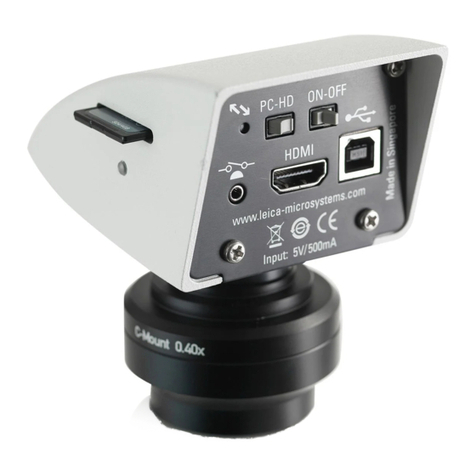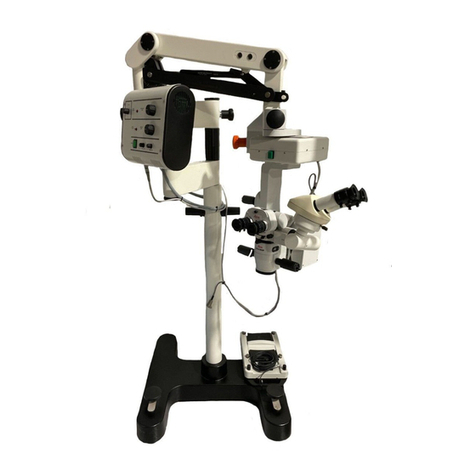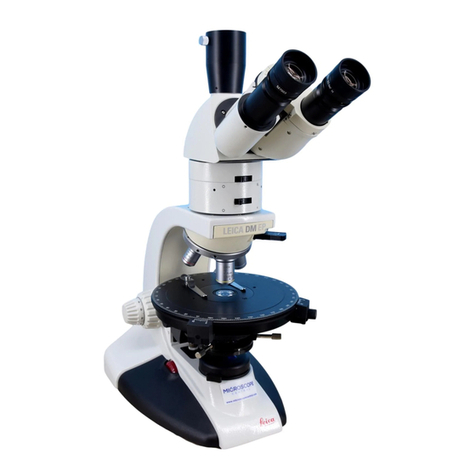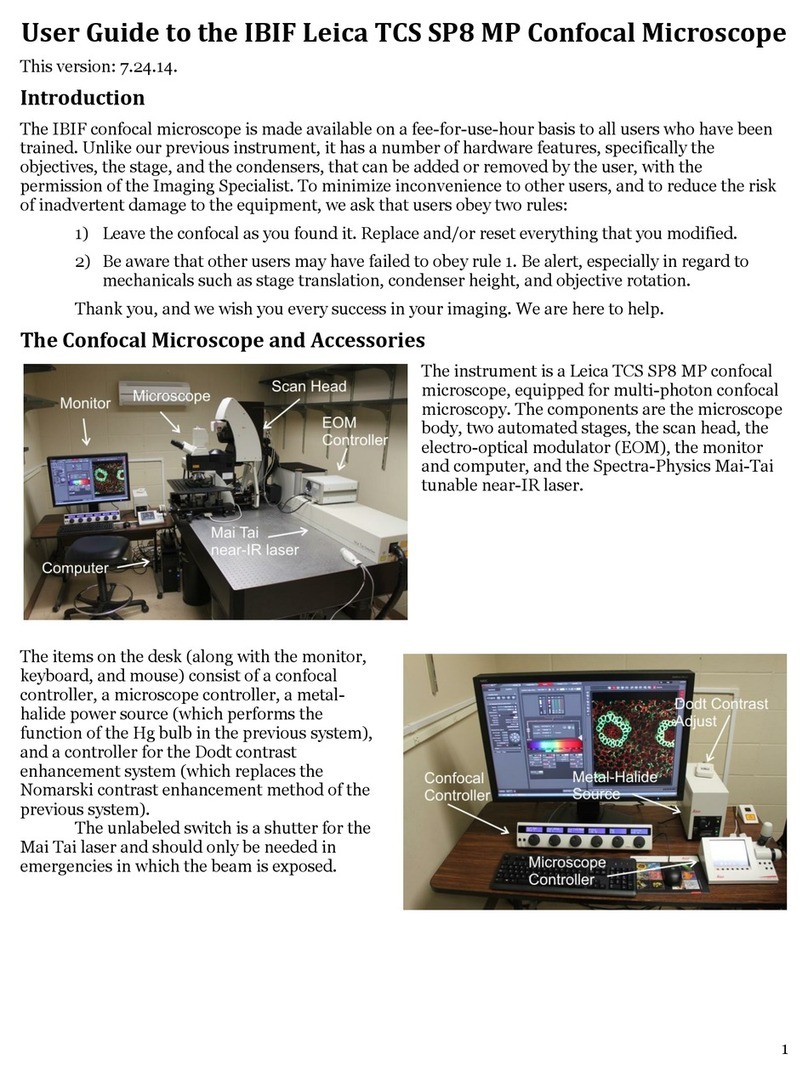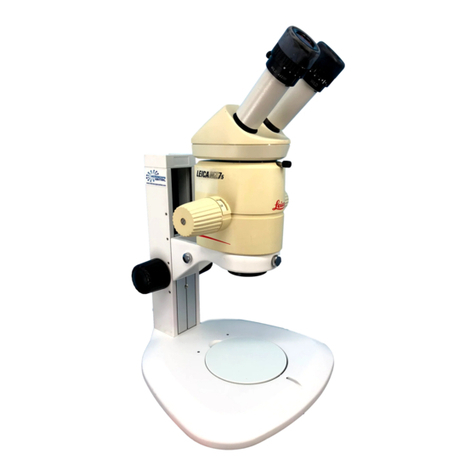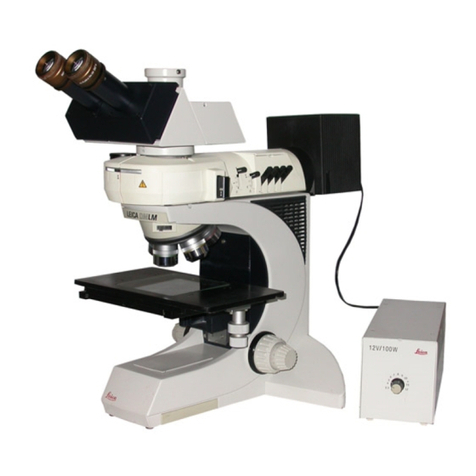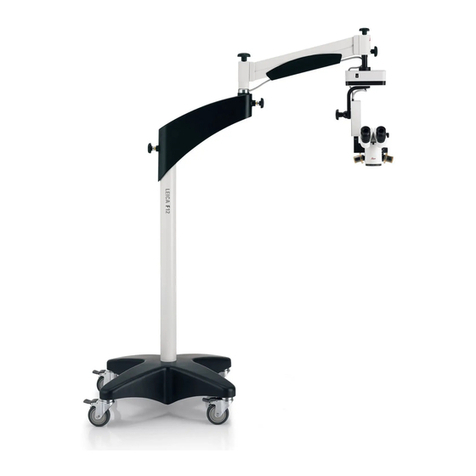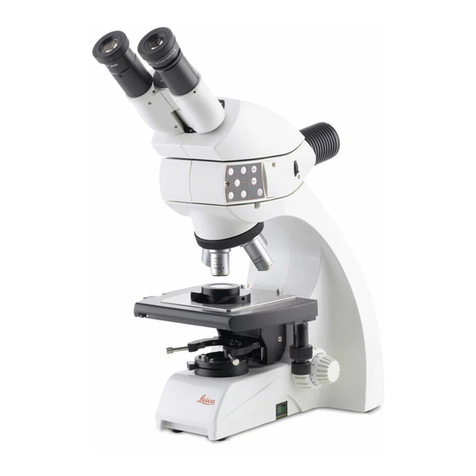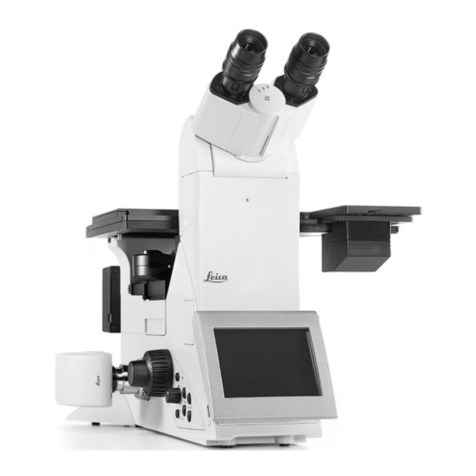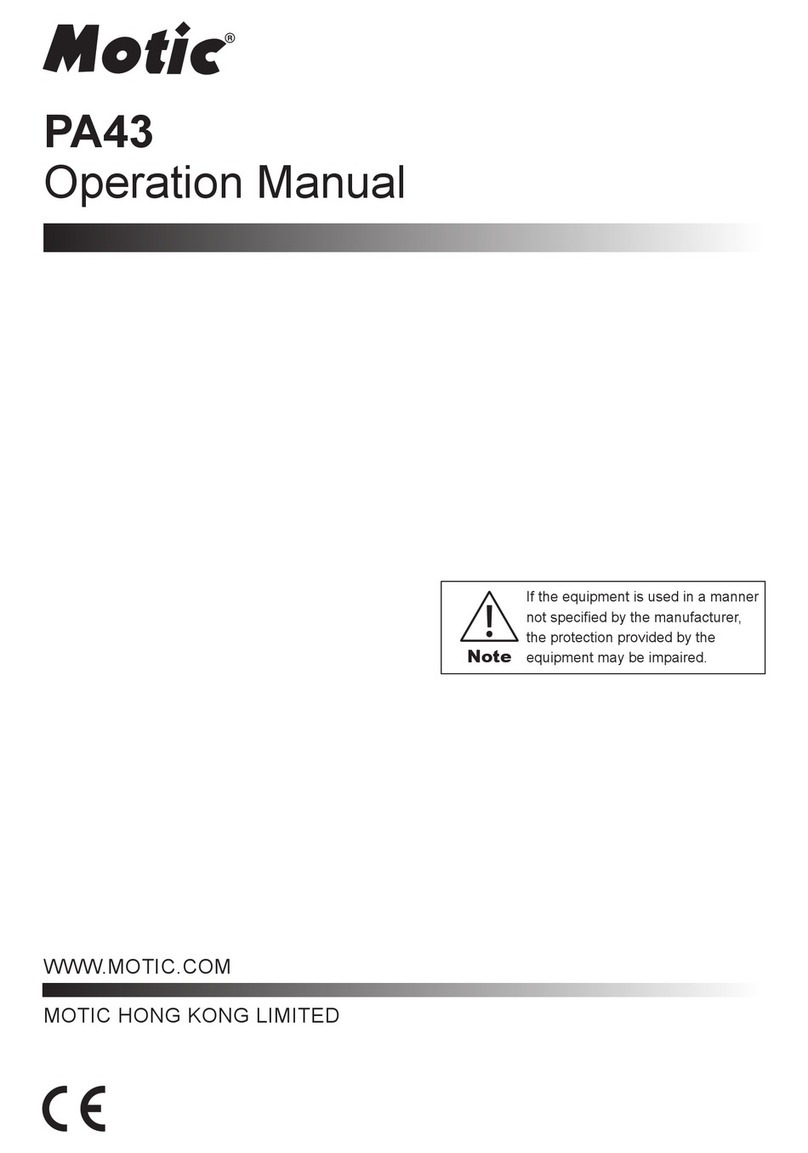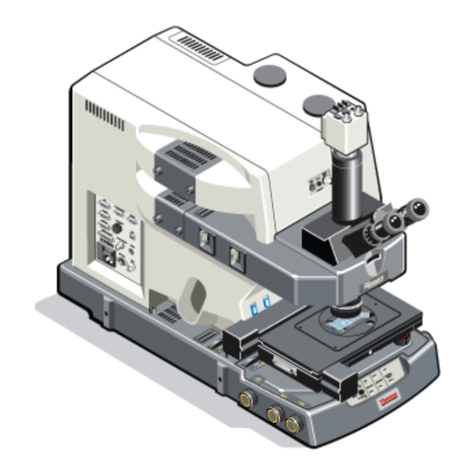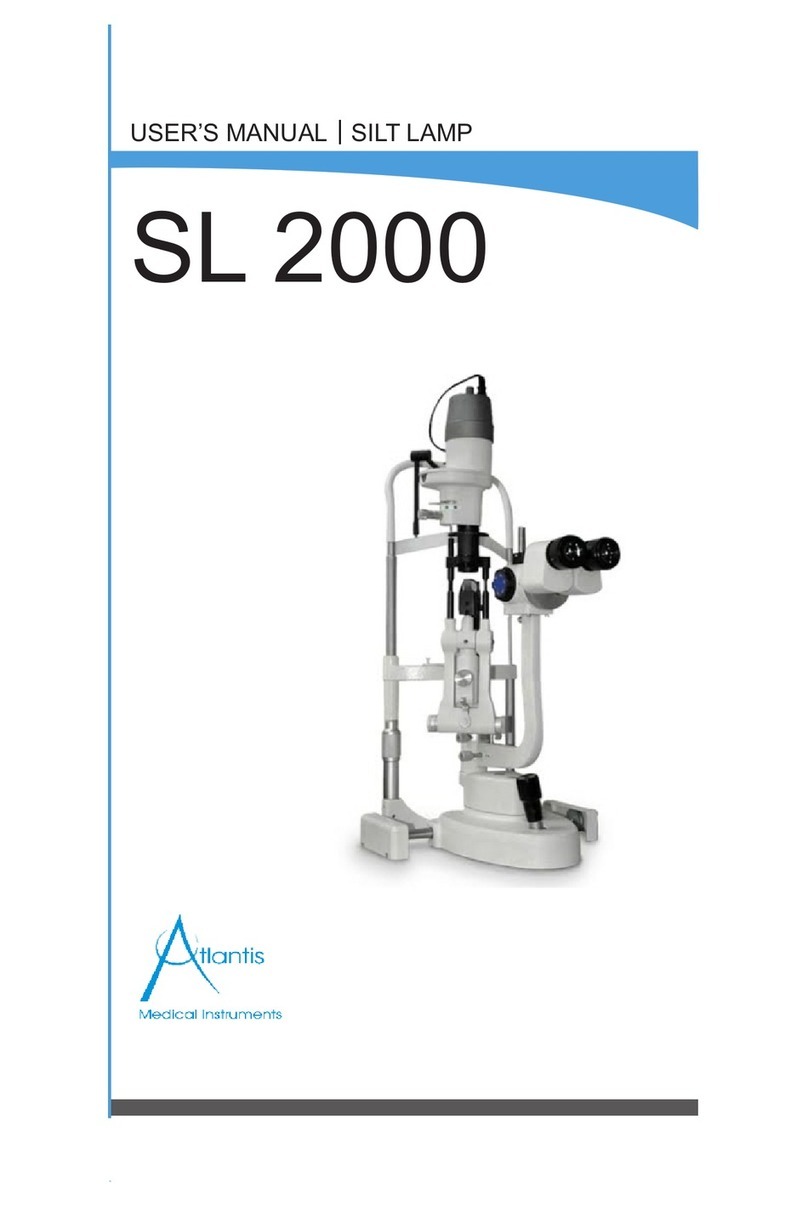
10
Safety
Attention:
To ensure that the microscope and
accessories are in a perfectly safe condition,
please note the following advice and
warnings: The mains plug must only be
inserted into a grounded outlet. If an ex-
tension cord is used, it must be grounded as
well. Using the connection on the base plate
(Fig. 4), any accessories connected to the
microscope which have their own and/or a
different power supply can be given the
same ground conductor potential. Please
consult our servicing personnel if you intend
to connect units without a ground conductor.
Attention:
The instruments and accessory components
described in the manual have been tested
for safety or possible hazards. It is essential
to consult your Leica agency or the main
factory in Wetzlar before carrying out any
operations on the instrument, modifications,
or combination with non-Leica components
not dealt with in this manual.
Transit protection
Attention:
The sensitive focus drive is only automatically
protected from damage during transport in its
original packing. If the packing is no longer
available or greatly damaged, the vertical stage
movement must be blocked by putting hard foam
rubber padding above and below the stage for
longer periods of transport. Objectives,
condenser, tube and intermediate systems
should be disassembled.
Tubes and intermediate systems
The tube is adapted to the stand direct (Fig. 23)
or via mediate systems (Fig. 31). Tubes and
intermediate systems are secured with the
lateral clamp screw (27.3):
Loosen clamp screw (27.3) slightly if necessary
with Allen key (1.1). Insert the tube or
intermediate system into the circular mount
(dovetail) and align by rotating (viewing port to
the front). Pol components may have a clickstop
device (pin).
Attention:
Make sure that components do not jam each
other. Retighten clamp screw (27.3).
When combined with other intermediate
systems, the fluorescence illuminator (Fig. 31)
is always assembled underneath (i. e. directly
onto the microscope stand). The number and
type of usable intermediate systems is limited,
→p. 25 –26.
Besides tubes from the DM L range (Fig. 35), it is
also possible to adapt tubes from DM R research
microscopes (Fig. 36) using the R/L adapter
(36.2).
The Ergo module (36.3) is for raising the viewing
port by 30 mm (or 60 mm if two are used).
!
!


